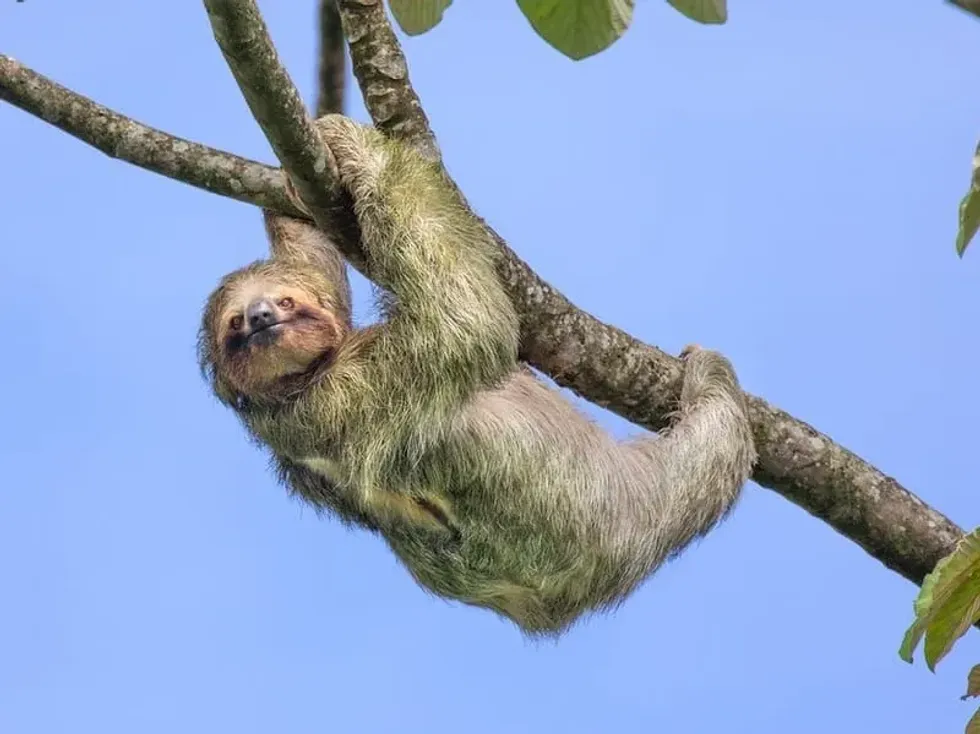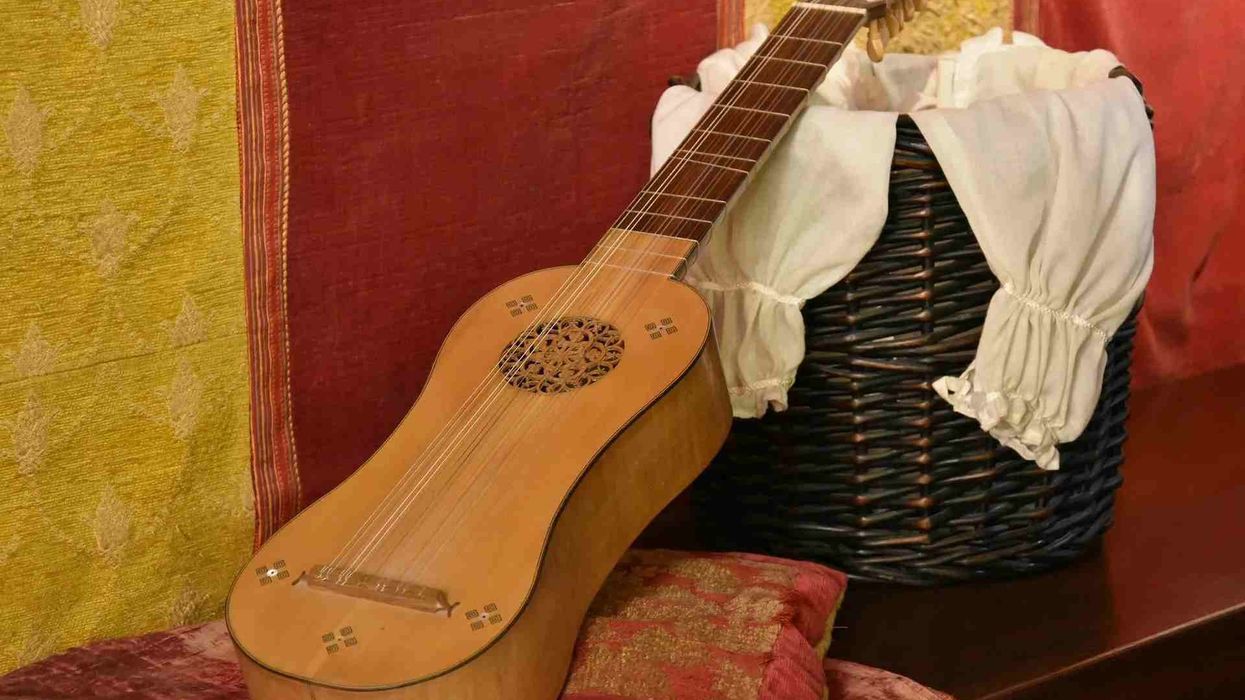Fun Xenarthra Facts For Kids

Content
- What type of animal are Xenarthrans?
- What class of animals do Xenarthrans belong to?
- How many Xenarthrans are there in the world?
- Where do Xenarthrans live?
- What is a Xenarthran's habitat?
- Who do Xenarthrans live with?
- How long do Xenarthrans live?
- How do they reproduce?
- What is their conservation status?
- What do Xenarthrans look like?
- How cute are they?
- How do they communicate?
- How big are Xenarthrans?
- How fast can Xenarthrans run?
- How much do Xenarthrans weigh?
- What are their male and female names of the species?
- What would you call a baby Xenarthran?
- What do they eat?
- Are they dangerous?
- Would they make a good pet?
- Did you know...
- Different Types Of Xenarthra
- Xenarthra Main Characteristics
Anteaters, armadillos, and sloths form a living group of New World mammals that originated in South America, and this group is termed Xenarthra. There are also some extinct species such as glyptodons and ground sloths.
There is a total of 31 species and 13 genera included in the order Xenarthra.
Although pangolins have some similar characteristics, they are still not included as xenarthrans. Formerly the xenarthran mammals were considered to be similar to the order Edentata occurring both as New and Old World species.
However, this common classification of the order Edentata was split up due to taxonomic differences, and the superorder Xenarthra was formed comprising some New World species of Cingulata and Pilosa order that have some similar characteristics. Most anteaters, sloths, and armadillos are found inhabiting almost all kinds of habitats between Central and South America.
Temperature plays a great role in the habitat choice of armadillos as they cannot thrive at all in cold lands because of low metabolic rate and lack of fat storage.
The Xenarthra gets its name from its typical body adaptation. To know more about their order, you can go through these amazing facts about the Xenarthra.
For similar content check out giant ground sloth facts and giant armadillo facts.
Xenarthra Interesting Facts
What type of animal are Xenarthrans?
The name Xenarthra refers to a large monophyletic group of many placental mammals that are believed to have the same ancestral lineage as they show some similar taxonomic Xenarthra characteristics.
What class of animals do Xenarthrans belong to?
The xenarthrans of order Pilosa and order Cingulata are all warm-blooded animals that belong to the class of mammal or Mammalia.
How many Xenarthrans are there in the world?
The total population of all xenarthrans is a bit difficult to determine as it is a combination of different orders. Many of the xenarthrans have even gone extinct millions of years ago with only three living species. Even the population of the living xenarthrans shows a large variation among its different subspecies.
Where do Xenarthrans live?
The xenarthrans developed millions of years ago in the Cenozoic era during the Paleocene in South America. From there a large number of sloths, anteaters, and armadillos started to migrate to different parts of central and North America since the late Pliocene.
At present all the living species are restricted to Central and South America with only one type of armadillo, the nine-banded armadillo, occurring in the south of the United States.
Extinct xenarthrans like giant armadillos and ground sloths were found to occur in North America in the past. The xenarthran distribution ranged from South America up to Alaska in the north where some fossil remains of extinct sloths have been discovered.
What is a Xenarthran's habitat?
The xenarthran habitat ranges according to the adaptation of its living species. All anteaters, armadillos, and sloths are commonly found in tropical rainforests.
Some species of anteaters are specialized for arboreal environments while others are extremely terrestrial and are found inhabiting savanna grasslands. These animals are well adapted for living in areas of dry tropical forests, grasslands, savannas, as well as rainforests.
Some typical species of anteaters can be found in the hottest and driest parts of Latin America. Unlike the anteaters and present sloths, armadillos are also found in temperate habitats along with the scrublands and forest floors of tropical regions.
Sometimes their range extends to grasslands and savannas around woody regions. The most common species of armadillos, the nine-banded armadillo (Dasypus novemcinctus), cannot thrive in dry or arid habitats.
They prefer to live near water in swampy or marshy riparian habitats. These placental mammals have a habit of staying away from human habitations, therefore, are found in interior forests.
Sloths are of two kinds, ground sloths, and arboreal sloths. The ground sloths went extinct a million years ago.
At present, they are only limited to the Central and South American warm, humid, tropical forest. Unlike the ground sloths, the current population of arboreal sloths prefers a tree with a large canopy which helps in the lateral movement of the species as well as shelters them from predators.
Who do Xenarthrans live with?
Xenarthrans are generally solitary animals. However, armadillos are sometimes seen traveling in groups or pairs. They stay alone in underground burrows. All present Xenarthra species the sloths, anteaters, and armadillos are polygamous. The males leave after mating.
How long do Xenarthrans live?
Different species live for different periods. The representative Xenarthra species like the nine-banded armadillo live for 12-15 years while the giant anteaters live for 14-16 years. The lifespan of sloths ranges between five and nine years.
How do they reproduce?
All the living Xenarthra species are polygamous that is they mate with different partners. They are mammals in nature and courtship between the male and female gives birth to live young.
Sloths give birth to a single baby while anteaters can produce up to two. However, the armadillos after a gestation period of 60-120 days can give birth to a litter of up to eight offspring, and in some cases even 12. The mothers take care of the babies and nourish them until they become independent.
What is their conservation status?
The conservation status of different xenarthrans depends on the availability of the particular mammal. The IUCN Red List has accordingly categorized every species of sloth, armadillo, and anteater ranging from Least Concern to Extinct species.
For example, the IUCN status for the three-toed sloth and the giant anteater, the representative species of sloths and anteaters is Vulnerable while the representative species of armadillos, the nine-banded armadillo is of Least Concern in the IUCN Red List.
Xenarthra Fun Facts
What do Xenarthrans look like?

The most common feature of the bodies of all xenarthrans is the Xenarthrous joints present on the lower backbone that strengthens the hips. Due to evolution and adaptation, this feature has however been eliminated from present sloths.
Sloths have tiny heads with slim bodies and tiny tails. They are covered with long and rough furs that are either gray or brown.
The sedimentation of algae on the outer hair makes it look green. They have long claws that help them to climb and hang from a tree.
Unlike other xenarthrans, the species of sloth are either three-toed or two-toed and are respectively called the three-toed sloths and the two-toed sloths. Anteaters have small heads with elongated snouts and the long thin tongue can be extended twice the length of its head. The color of their fur is either black or brown.
On the other hand, another living Xenarthra, the armadillos have a tail made up of bony scales like its armor. Hair growth is less and present in between the shell.
The most common species of armadillo, the nine-banded armadillo, has more or less nine visible bands that are separated by an epidermal layer and hair. The shell color varies from yellow to brown.
How cute are they?
The appearance of xenarthrans is not that appealing. However, all animals play an equally important role in the ecosystem.
How do they communicate?
The xenarthrans have poor eyesight. Most of the communication occurs through sound and smell.
How big are Xenarthrans?
The length of each living xenarthran is different from the others. For example, the sloths grow about 16-31.5 in (40-80 cm) in size while the armadillo's length ranges from 5-59 in (13-150 cm). The anteaters show a large variation in their size measuring from 14-71 in (35-180 cm).
How fast can Xenarthrans run?
An anteater is generally a sluggish mammal that can move at a speed of 30 mph (48 kph) when necessary. Armadillos can travel at the same speed as anteaters. Sloth is the slowest mammal on earth moving 1 ft (30 cm) in a minute. For this reason, they are called sloths.
How much do Xenarthrans weigh?
The weights of the living xenarthrans, the sloth, anteater, and armadillo range respectively between 8-17 lb (3.6-7.7 kg), up to 66 lb (30 kg), and 0.2-119 lb (0.085-54 kg).
What are their male and female names of the species?
The species of Xenarthra do not have any particular name for a male or female of any animal.
What would you call a baby Xenarthran?
The babies of an anteater and armadillo are called pups while sloth babies are called cubs.
What do they eat?
Armadillos and anteaters are strictly insectivorous and their diet is based on insects, ants, and termites. However, sloths are omnivorous and can eat fruits, insects, lizards, carrion, and leaves.
Are they dangerous?
Yes, the xenarthrans can turn out to be quite furious when they feel threatened. They can attack and kill human beings with their sharp claws. However, generally, they are peaceful and do not show much aggression.
Would they make a good pet?
Petting any animal of Xenarthra order is not at all recommended not only because they are wild animals that belong in the forests but also because it is impossible to provide them with their natural habitat in a captive environment. Although some may be found in zoos under experienced supervision.
Did you know...
The term xenarthrans are pronounced as 'zen-arth-ranz'.
Different Types Of Xenarthra
The mammal group Xenarthra consists of three living species, anteaters, armadillos, and sloths. The sloths are slow-moving lazy animals that spend most of their lives hanging from the tree with their long limbs and are not involved in nest building.
They barely come down on the ground and feed on the thick algae that grow on their fur by licking it off.
The preference for their tree depends on the availability of food and inheritance of their home range. The giant anteater on the other hand uses only their tongue to lick their food as they do not possess the peculiar Xenarthra teeth.
The giant anteater stays on land while the pygmy anteaters climb trees using their prehensile tail.
The armadillos are more or less terrestrial that dig burrows and rest underground in rainforests or deciduous forests. The armadillos show a large variation in their size and the size of their body armor ranges accordingly.
Most of the armadillo's body is covered by the armor and hair growth is less in comparison to a sloth or an anteater.
Some species of anteater like the silky anteater are found as north as the southern part of Mexico while the giant anteaters cover Central America. They are also found in Uruguay and eastern Brazil.
Similarly, the sloth population is also restricted to Central and South America.
The three-toed sloth is the most common sloth species covering the largest range of all sloths including countries like Brazil, Bolivia, Peru, Costa Rica, and Panama. The nine-banded armadillo is the only xenarthran that is found in North America extending to Florida and North Carolina in the east.
Xenarthra Main Characteristics
All the mammals of the order Cingulata like armadillos and the mammals of the order Pilosa like anteaters and sloths along with some extinct animals formerly belonged to the order Edentata.
However, due to some physical and taxonomical differences, the living species of anteaters, sloths, and armadillos along with the extinct species like glyptodon, and ground sloths formed a higher classification called Xenarthra and came to be known as xenarthrans.
These placental mammals have some physical characteristics that are different from other mammals.
The Xenarthra animals get their name from a typical structure of their lower backbone. The lumbar vertebrae of their body show Xenarthrous joints which means strange joints.
The current species of sloths have lost this articulation as an adaptation for climbing trees, however, in the fossils of extinct sloths, the presence of the additional articulations of the lumbar vertebrae was noticed. The extinct Glyptodons also had armadillo-like armor.
The hard body armor gives extra protection to the body and helps in digging.
The armadillos, glyptodons, and other Cingulata animals have more physical resemblance with the earliest xenarthran mammals than the anteaters and sloths. They have long digits on their hands and all of them end in claws.
Apart from the two-toed and three-toed sloth, all other xenarthrans have five digits on their hind leg. The earliest xenarthrans were smaller in size and their body gradually grew with evolution.
The xenarthran dental formation is unique among mammals. They do not have any milk teeth and their teeth lack enamel.
It is believed that the ancient mammal ancestor from which they evolved already lost their milk teeth during evolution.
However, anteaters are toothless while armadillos and sloths have continuously growing teeth. It is also believed that the xenarthran ancestors were underground living mammals with reduced eyesight since the present xenarthrans have a monochrome vision.
Here at Kidadl, we have carefully created lots of interesting family-friendly animal facts for everyone to discover! Learn more about some other mammals from our two-toed sloth facts and giant armadillo facts pages.
You can even occupy yourself at home by coloring in one of our free printable Xenarthra coloring pages.
We Want Your Photos!
More for You
Sources
https://www.britannica.com/animal/xenarthran
https://ucmp.berkeley.edu/mammal/xenarthra.html
https://www.encyclopedia.com/environment/encyclopedias-almanacs-transcripts-and-maps/xenarthra-sloths-anteaters-and-armadillos
https://www.activewild.com/xenarthra/
https://animaldiversity.org/accounts/Cingulata/
https://www.sciencedirect.com/topics/immunology-and-microbiology/xenarthra
See All
Bachelor of Arts specializing in Journalism and Mass Communication, Postgraduate Diploma in Sports Management

Moumita DuttaBachelor of Arts specializing in Journalism and Mass Communication, Postgraduate Diploma in Sports Management
A content writer and editor with a passion for sports, Moumita has honed her skills in producing compelling match reports and stories about sporting heroes. She holds a degree in Journalism and Mass Communication from the Indian Institute of Social Welfare and Business Management, Calcutta University, alongside a postgraduate diploma in Sports Management.
Bachelor of Business Management

Yashvee PatelBachelor of Business Management
Yashvee has won awards for both her writing and badminton skills. She holds a business administration honors degree and has previously interned with social media clients and worked on content for an international student festival. Yashvee has excelled in academic competitions, ranking in the top 100 in the Unified International English Olympiad and placing second in an essay-writing competition. Additionally, she has won the inter-school singles badminton title for two consecutive years.
Disclaimer
1) Kidadl is independent and to make our service free to you the reader we are supported by advertising. We hope you love our recommendations for products and services! What we suggest is selected independently by the Kidadl team. If you purchase using the Buy Now button we may earn a small commission. This does not influence our choices. Prices are correct and items are available at the time the article was published but we cannot guarantee that on the time of reading. Please note that Kidadl is a participant in the Amazon Services LLC Associates Program, an affiliate advertising program designed to provide a means for sites to earn advertising fees by advertising and linking to Amazon. We also link to other websites, but are not responsible for their content.
2) At Kidadl, we strive to recommend the very best activities and events. We will always aim to give you accurate information at the date of publication - however, information does change, so it’s important you do your own research, double-check and make the decision that is right for your family. We recognise that not all activities and ideas are appropriate for all children and families or in all circumstances. Our recommended activities are based on age but these are a guide. We recommend that these ideas are used as inspiration, that ideas are undertaken with appropriate adult supervision, and that each adult uses their own discretion and knowledge of their children to consider the safety and suitability. Kidadl cannot accept liability for the execution of these ideas, and parental supervision is advised at all times, as safety is paramount. Anyone using the information provided by Kidadl does so at their own risk and we can not accept liability if things go wrong.
3) Because we are an educational resource, we have quotes and facts about a range of historical and modern figures. We do not endorse the actions of or rhetoric of all the people included in these collections, but we think they are important for growing minds to learn about under the guidance of parents or guardians.







